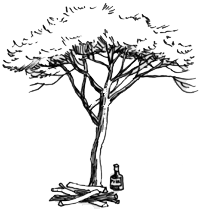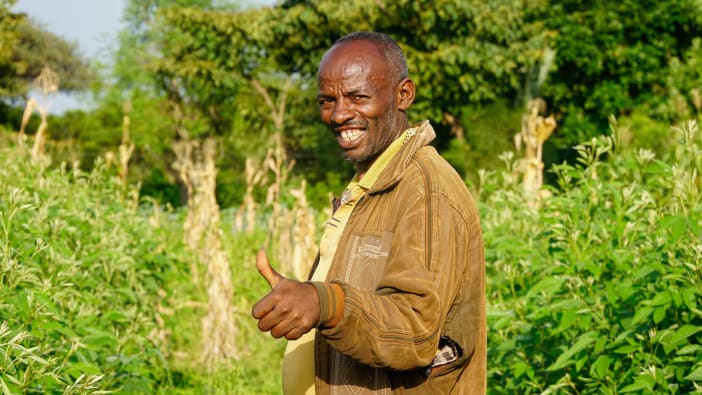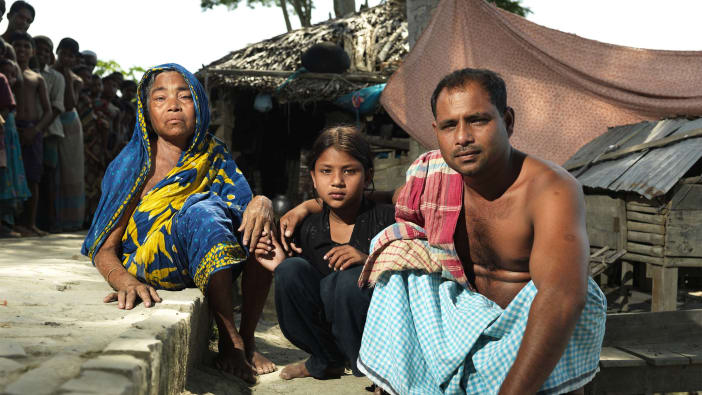- Trees help us in so many ways. See how many uses you can think of.
- Consider how much can grow in a forest and how fertile the forest soil can be. Agroforestry tries to introduce some of the benefits of the forest onto our farms. The trees used for agroforestry must not harm crops or the soil.
- Agroforestry trees may be either local trees, which have grown in your area for hundreds of years, or trees recently introduced from other countries. When trees from outside are introduced, these are called ‘exotic’ trees. Unfortunately people may regard local trees as ‘planted by God’ and not value them. It is often easier to encourage people to plant exotic trees because they are new.
Discussion
The different uses of trees: Participants are unlikely to need help as they begin to think of the different uses of trees. But they may not think of all the different benefits. After some discussion, you may need a few more ideas to encourage people’s thinking. Here is a list of some of the benefits of trees:
- For fruit and leafy vegetables
- For shade
- As fences
- As windbreaks
- For building and furniture
- For firewood
- For charcoal
- For making paper and crafts
- For protecting the soil from erosion and improving soil fertility
- For medicines
- The sale of young trees or tree products brings income
- For fodder
- As sources of food in times of famine
What are the advantages and disadvantages of local trees and exotic trees?
First allow people to share their views. Here are some helpful points in case people do not suggest these:
- The qualities of local trees will be well known; they will be adapted to the local climate, and used to pests and diseases. However, they may be slow growing or limited in their usefulness.
- Exotic trees may not grow well in the local climate and they will not be adapted to pests and diseases. They may include citrus trees (oranges, lemons, grapefruit etc), eucalyptus, neem, leuceana and prosopis. However, exotic trees may be fast growing and have many benefits. It is usually best to grow a combination of both local and exotic trees.
- Before the meeting, check on some examples of both local and exotic trees. Use the local names that people are comfortable with.
- What are the priorities within your own household for the various uses of trees? Are these likely to be the same as your neighbours? Does everyone in your household share the same priorities?









